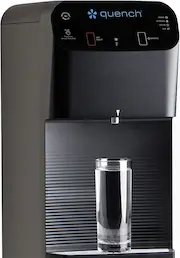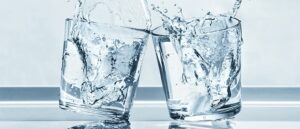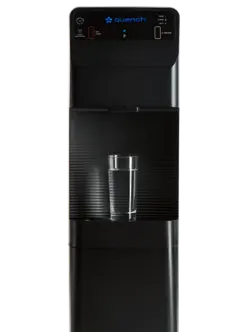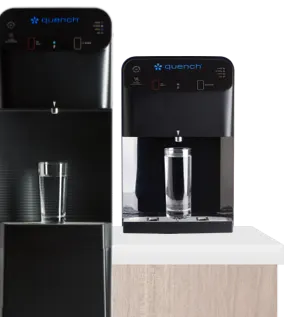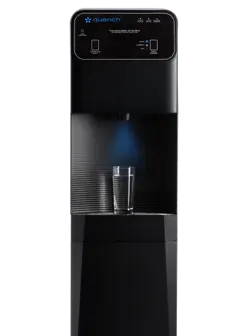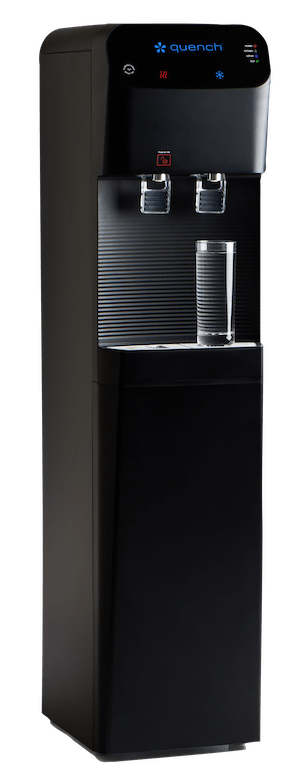As you strive for better health and productivity each day, remember that the quality of your drinking water makes all the difference. Whether for staying hydrated at home or fueling your energy levels at work; clean, refreshing water plays a pivotal part in your overall well-being.
Read on as we dive into the main factors influencing water quality in your area and how you can find access to clean water sources to keep you hydrated and satisfied.
The Role of Water Quality in Optimal Hydration
Local water quality refers to the characteristics of the water supply in your specific geographic region. This generally encompasses factors like its source, purity, taste, and safety for consumption. While sometimes overlooked, the quality of drinking water can considerably impact your daily hydration habits — influencing the reliability and flavor of tap water. And because of differing water treatment processes, environmental factors, and more, water quality can vary from one zip code to another.
As a result, understanding what influences your unique water quality and introducing proper solutions to improve it can guarantee a consistent flow of tasty drinking water tailored to your needs.
What Are Water Quality Standards?
While local water quality varies across regions, they must all adhere to water quality standards (i.e., the safe levels of drinking water contaminants and characteristics for consumption and environmental health).
Who oversees these standards? In 1974, Congress passed the Safe Drinking Water Act (SDWA), assigning the Environmental Protection Agency (EPA) the responsibility of establishing and enforcing defined water quality standards to support public health. This involves water quality monitoring and ensuring that state, local authorities, and water suppliers implement these benchmarks.
As of today, the SDWA has established maximum contaminant levels and treatment criteria for over 90 different impurities in public drinking water supplies. Compliance with these standards proves vital for water supply safety and, consequently, your long-term wellness.
Health Issues Associated With Poor Local Water Quality
If water quality declines in your area and you lack adequate systems to effectively clean it, you may face several health consequences, including:
- Gastrointestinal distress: Drinking water contaminated with bacteria, parasites, or other pathogens can lead to stomach aches, diarrhea, vomiting, and other gastrointestinal issues, per the Minnesota Department of Health.
- Increased potential for illness: Research reveals that a poorly maintained water source can harbor harmful chemicals, heavy metals, and toxins. Consumption increases your likelihood of developing cardiovascular disorders, neuronal damage, renal injuries, and risk of cancer and diabetes.
- Weakened immune system: Exposure to impurities in contaminated water can compromise the immune system. Consequently, individuals are more susceptible to infections and illnesses.
- Long-term health concerns: Chronic exposure to contaminants in poor-quality water results in potentially serious long-term health issues, including cancer, cardiovascular disease, and developmental disorders.
7 Factors Influencing Your Water Quality
Let’s explore the seven major factors impacting drinking water quality across the country:
1. Water Source
Your drinking water source is a key ingredient in determining its quality. Some of the most common drinking water sources include:
- Municipal water systems
- Surface water
- Groundwater
- Bottled water
- Water reservoirs
- Underground wells
- Rainwater harvesting
Surface water is often prone to contamination from runoff and pollution, whereas groundwater tends to be cleaner, albeit with natural impurities like dissolved minerals. Alternatively, municipal water systems and bottled water undergo rigorous treatment to ensure cleanliness.
2. Contaminants and Total Dissolved Solids
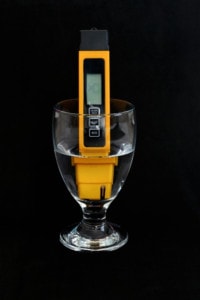
Contaminants, including bacteria, chemicals, and heavy metals, can spoil the taste of water and harm human health, potentially causing waterborne illnesses and long-term health issues. Total dissolved solids (TDS), on the other hand, include dissolved minerals, salts, and metals — influencing taste and water hardness. While some minerals are essential for health, excessive TDS levels can pose health risks, such as kidney stones or diabetes.
3. Water Treatment Processes
Water treatment processes in your area meet water quality parameters by removing contaminants and reducing TDS. These systems typically include filtration, disinfection, and desalination — designed to make water safe for consumption. Effective treatment removes dangerous bacteria, viruses, and chemicals, safeguarding your health over time. However, in areas suffering from inadequate or outdated treatment facilities, you risk exposure to poor water quality, which can compromise your well-being.
4. pH Levels
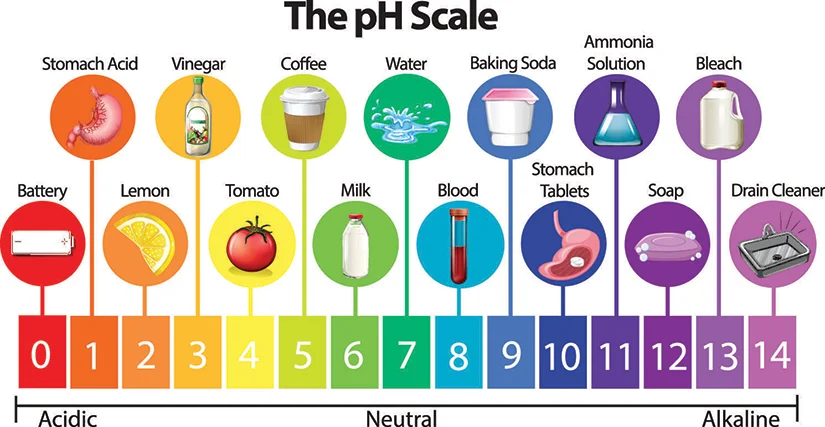
Water quality criteria also encompasses pH levels, which indicate how acidic or alkaline water is. Generally, the ideal drinking water has a neutral pH, around seven, ensuring it’s safe and pleasant to consume. If water is too acidic or alkaline, you may encounter corrosion or scaling in your pipes. This can potentially release harmful metals like lead into the water supply and cause long-term wellness issues.
5. Water Temperature
Water temperature can also subtly influence health. The Florida Department of Agriculture and Consumer Services reveals that warmer water may encourage bacterial growth; raising the risk of waterborne diseases and affecting water’s taste and smell. Conversely, cold water is generally less prone to bacterial contamination, offering a safer and more refreshing option for drinking.
6. Piping and Distribution Systems
When water makes its way from its source to your tap, your piping and distribution systems can impact its quality. Old or corroded pipes can leach toxic metals like lead and copper into drinking water, compromising taste and purity. That’s why regular maintenance and system updates are important to reduce your exposure to potentially harmful substances.
7. Climate and Environmental Factors
Environmental factors like heavy rainfall and flooding can lead to contamination of surface water sources. This increases the risk of microbial pathogens and pollutants entering the water supply. Similarly, droughts in your region can lower water levels, concentrating contaminants and reducing water availability. Climate change only exacerbates these challenges, changing precipitation patterns and worsening water scarcity. Understanding and proactively mitigating environmental impacts is essential for safeguarding public health and ensuring access to safe drinking water.
Water Testing To Determine Drinking Water Quality
To achieve optimal health and find the right drinking water solution, it’s crucial to consider how the factors mentioned might affect water quality in your area. And if you want to be sure, you can assess quality with an at-home water testing kit. Alternatively, you can enlist the expertise of professionals like our Quench Water Experts. They offer valuable insight into water quality assessment and solutions, helping you access customized filtration systems and purification technologies for clean water whenever you need it.
Ensure Premium Drinking Water With Quench®
Water quality impacts more than taste, it directly influences your health and well-being. Recognizing factors affecting water quality and accessing solutions that ensure cleaner water options safeguard long-term wellness for residents and workplaces alike.
Quench stands as a beacon of reliability and excellence in ensuring premium drinking water, providing a team of local experts and cutting-edge filtration technology. Our range of bottleless water coolers with advanced filtration systems can meet diverse water quality needs. With Quench, you enjoy peace of mind knowing that you have delicious drinking water solutions at your fingertips.
Ready for improved hydration solutions? Get a free estimate to get started.
